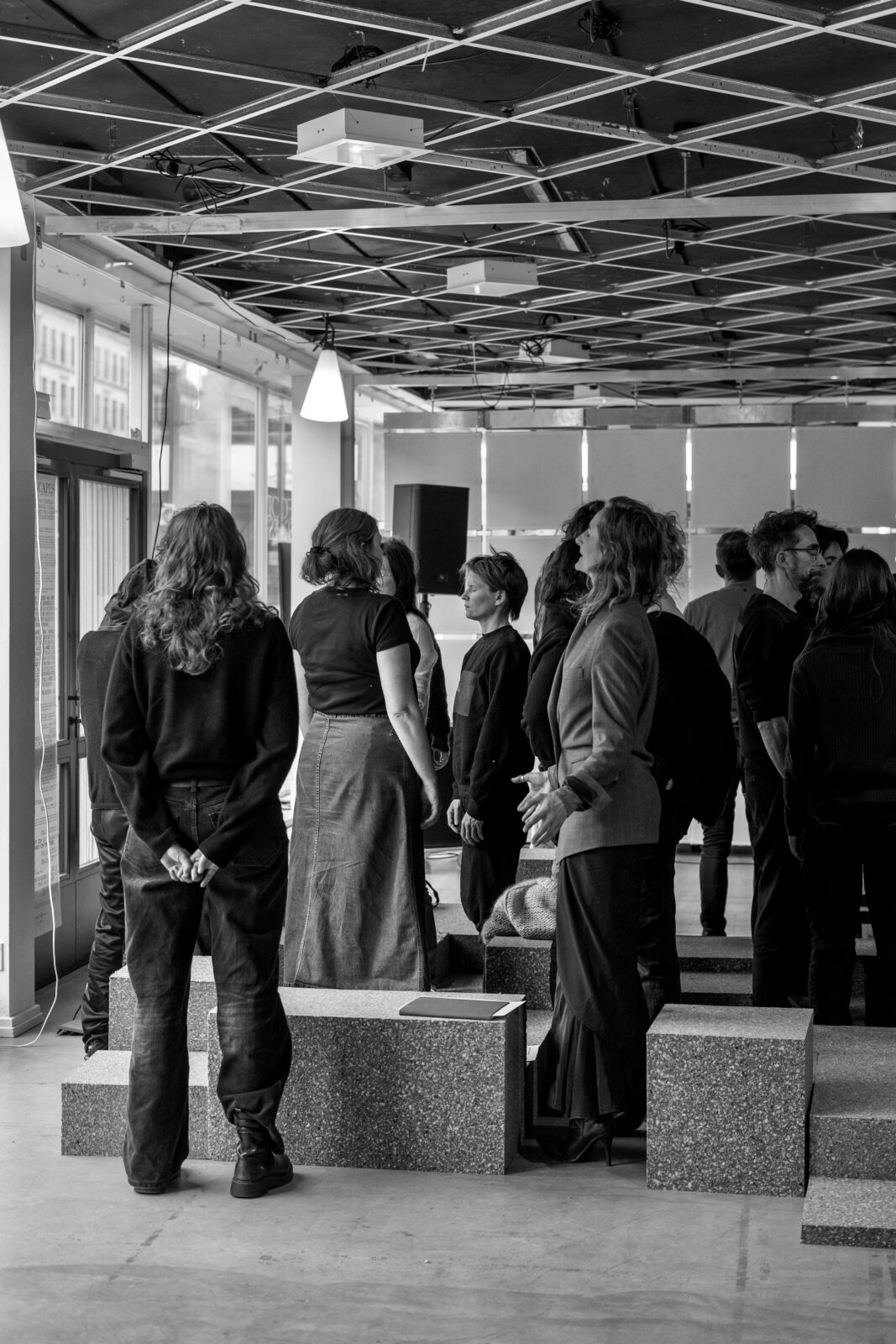Testing Ground: The Listening Body
This Testing Ground week explores and engages the listening body – how we as bodily beings always already are listening from, to, with, and through bodies. We seek to investigate the diverse meanings and consequences of being a body that listens, as well as a body that is being listened to. We may wonder, in what ways does our capability to listen situate our bodies in thick and complex environments?
For this week we had the pleasure of working together performance artist Nana Francisca Schottländer and artist/composer Barbora Kováčová.
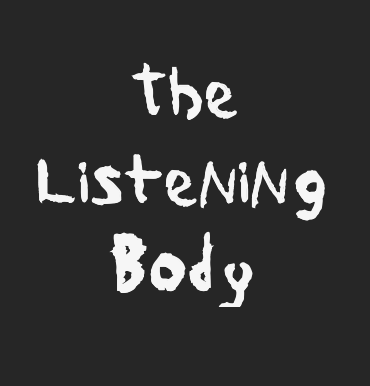
THE TYPEFONT USED IS CALLED 'MOTHER NATURE IS A LESBIAN'. IT IS CREATED BY BE OAKLY AT GENDERFAIL, AND IS BASED ON A PROTEST SIGN. IT IS OPEN SOURCE AND USED HERE AFTER ECONOMIC DONATION TO GENDERFAIL PRESS.
A possible inspirational and framing quote for the Listening Body:
“Our struggles then must begin with the reappropriation of our body, the revaluation and rediscovery of its capacity for resistance, and expansion and celebration of its powers, individual and collective.”
[…]
“Our bodies have reasons that we need to learn, rediscover, reinvent. We need to listen to their language as the path to our health and healing, as we need to listen to the language and rhythms of the natural world as a path to the health and healing of the earth. Since the power to be affected and to effect, to be moved and to move, a capacity that is indestructible, exhausted only with death, is constitutive of the body, there is an immanent politic residing in it: the capacity to transform itself, others, and change the world.”
(Silvia Federici, Beyond the Periphery of the Skin, Pm Press,2020, pp.123-124).
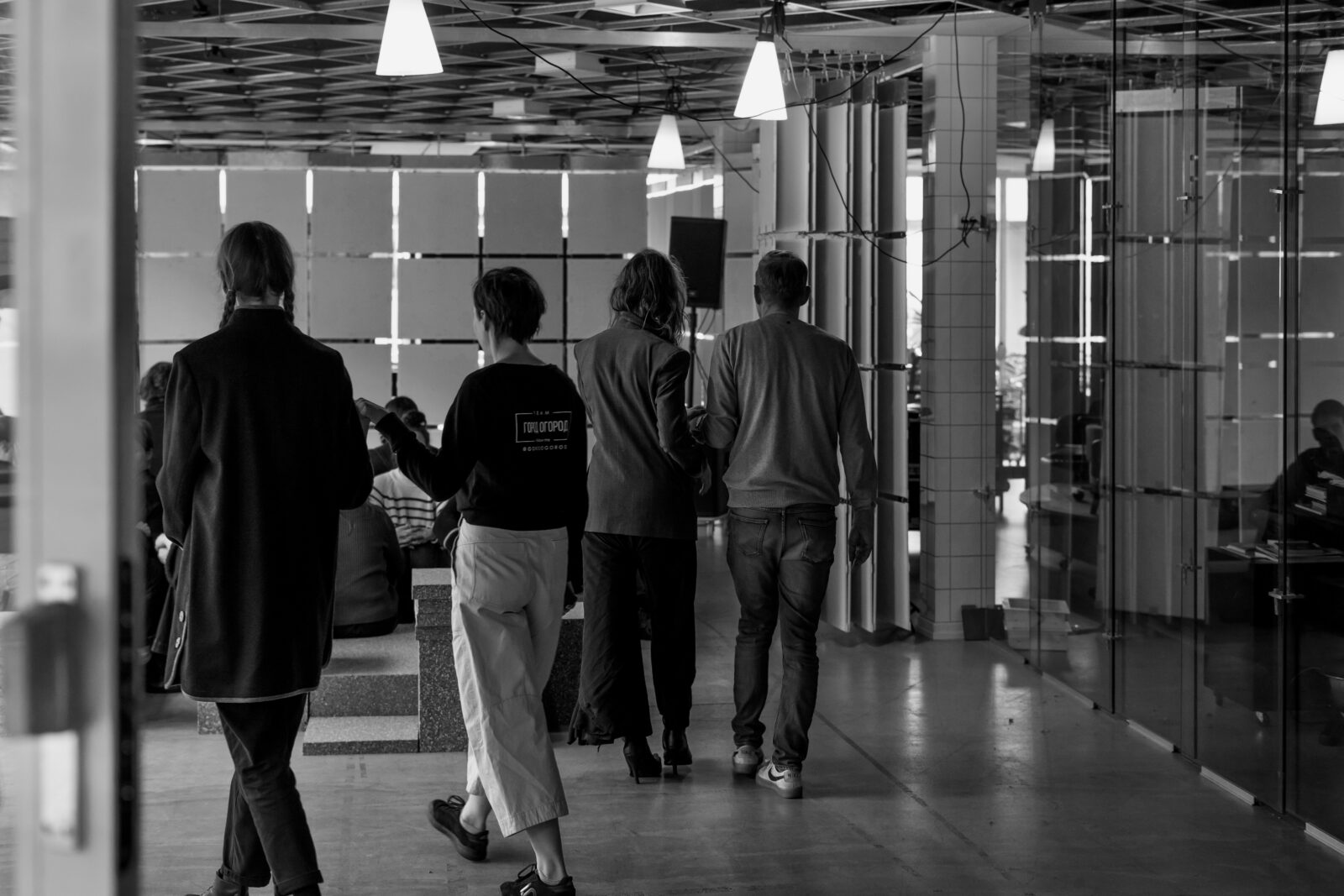
From Listening Event III, 21/03/2024, Art Hub Copenhagen

From Listening Event III, 21/03/2024, Art Hub Copenhagen

From Listening Event III, 21/03/2024, Art Hub Copenhagen
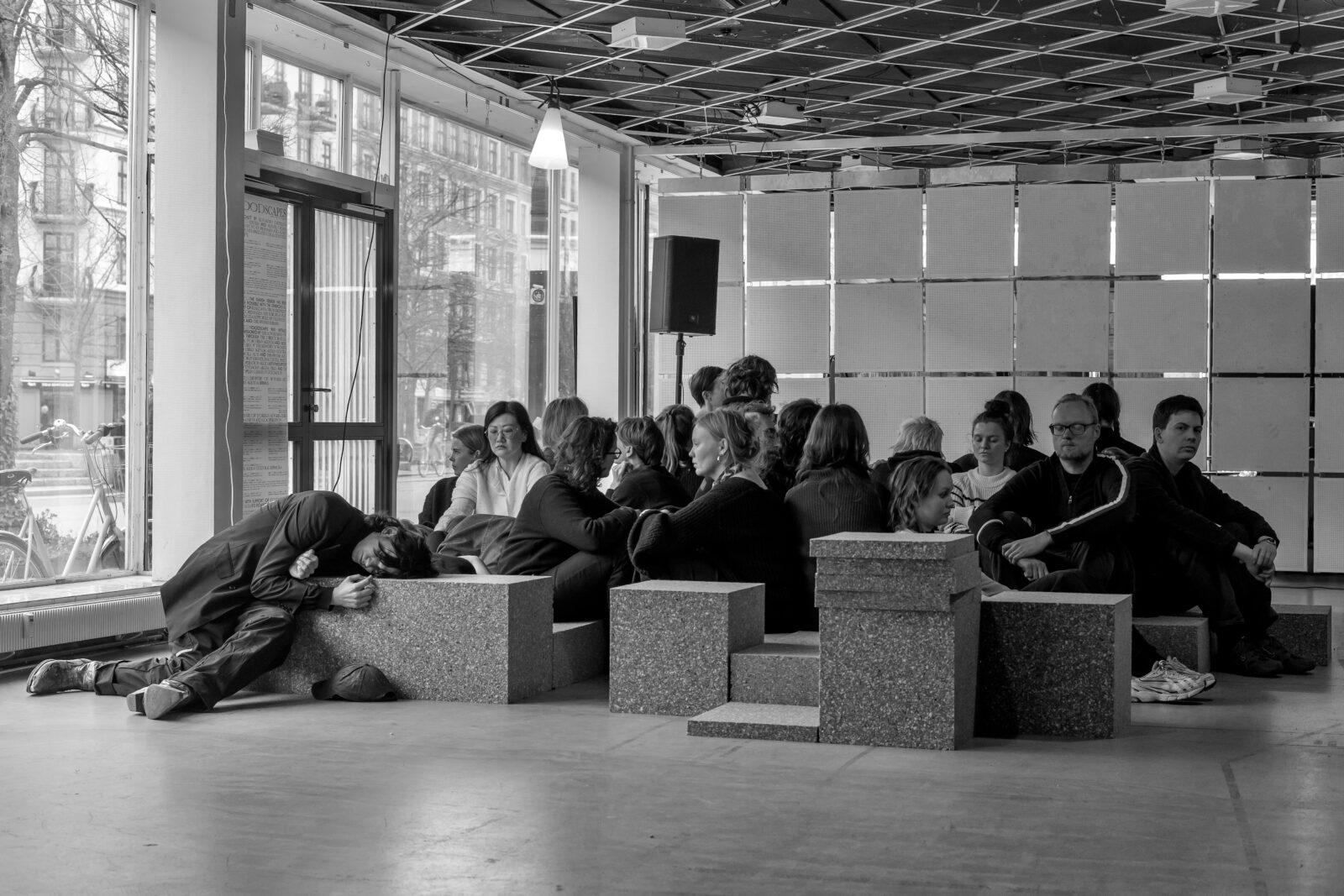
From Listening Event III, 21/03/2024, Art Hub Copenhagen
Prompt/invitation to start up the Study Group for Listening session regarding the listening body:
Dearest you,
Thank you for being right here, right now.
You are now, as a body, invited to go for a short but slow and deep listening walk.
Start to walk at the slowest pace possible.
While walking you can, if wanting to, contemplate on the following questions (otherwise, just keep walking, as a body):
While moving as the slowest pace possible, in what ways do you become aware of being a body? A body that listens? A body that are being listened to by other bodies?
In what way are you aware of being a listening body in movement?
In what ways does your body respond to the present environment, the complexity of the place? To the elements that you might not recognize or immediately understand?
In what ways are you/we bodies in a poetic ecology of resonance (or dissonance)?
Give yourself time to time to wonder, to let your body wonder…
—
In your own way, try to move slow enough for you to lose balance, to get disorientated, to rediscover the capacities of your body and the thick layers of this place…
Thank you.
Up-starting ritual #1:
[A series of rituals/practices/exercises/check-ins… to mark and attune each ‘workshop’ day. Each ritual will last 15 minutes.]

From Listening Event III, 21/03/2024, Art Hub Copenhagen
Up-starting ritual #2:
Improvised Ritual
In the absence of a ritual, there was a reading of She Unnames Them by Ursula K. Le Guin followed by a conversation about she and unnaming.
Exercise for dialogical encounters and creations in and with a landscape /place /space
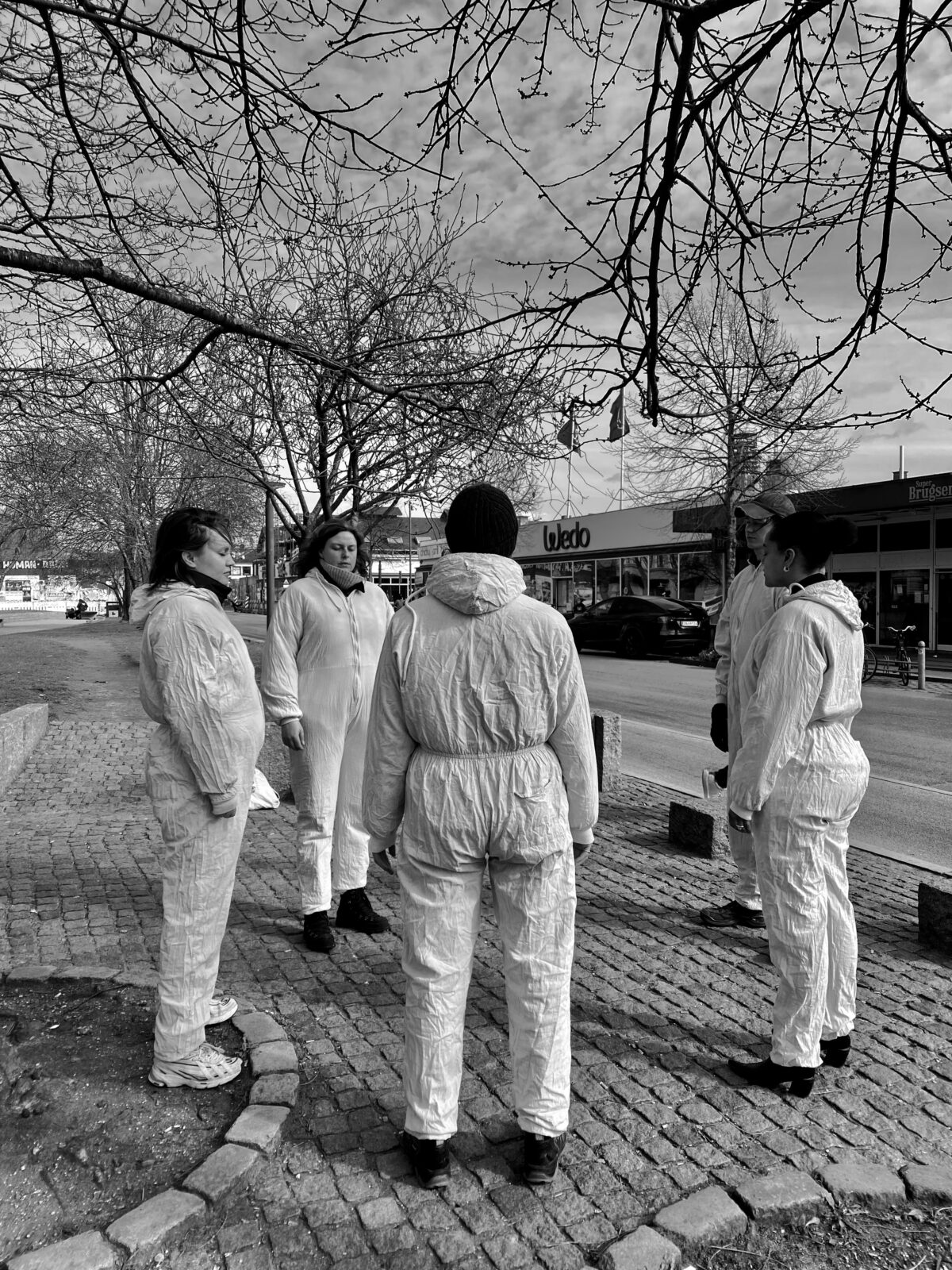
Photo: Art Hub Copenhagen.
– a workshop exploring the artistic and methodological aspects of ‘to-go-visiting’ with/as a body, created and facilitated by Nana Francisca Schottländer
[Tuesday the 19th from 12.30 – 15.30, taking place within the urban landscape of Vesterbro/The Meatpacker District, with a radius of a 7 minutes walking distance. No photographical documentation was made during the 3 hours, as no digital devices except time keeping devices was allowed to bring.]
Up-starting ritual #3:
[A series of rituals/practices/exercises/check-ins… to mark and attune each ‘workshop’ day. Each ritual will last 15 minutes.]
A walk for questions:
Let the body go for a walk lasting 10 minutes (or longer if the time schedule allows it…)
The walk may take the directions, paces and forms as your body pleases
While walking, listen to the questions that the environment you are walking through might be asking your body…
Let it be a walk just for your body and its encounter with the environment…
When arriving back at the starting point with the group, spend a few moments thinking about the questions encountered – chose one or two to share with the group
The group should not make any responses to the shared questions.
Wednesday the 20th of Marts
The vault at Art Hub Copenhagen
55 minutes.
Present: Nana Francisca Schottländer, Barbora Kováčová, Amalie Sejersdahl, Randi Lindholm Hansen, Lukas Quist Lund.
Unedited AI generated transcription (apologies for spelling mistakes).
[To be revisited, sorting out speakers and fragmentized later on].
Field Notes:
To both summarize notes from the testing ground week and poetically share these with the guests at Listening Event III, different ‘field notes’ was collected from our notes and conversations. These are gathered together here:
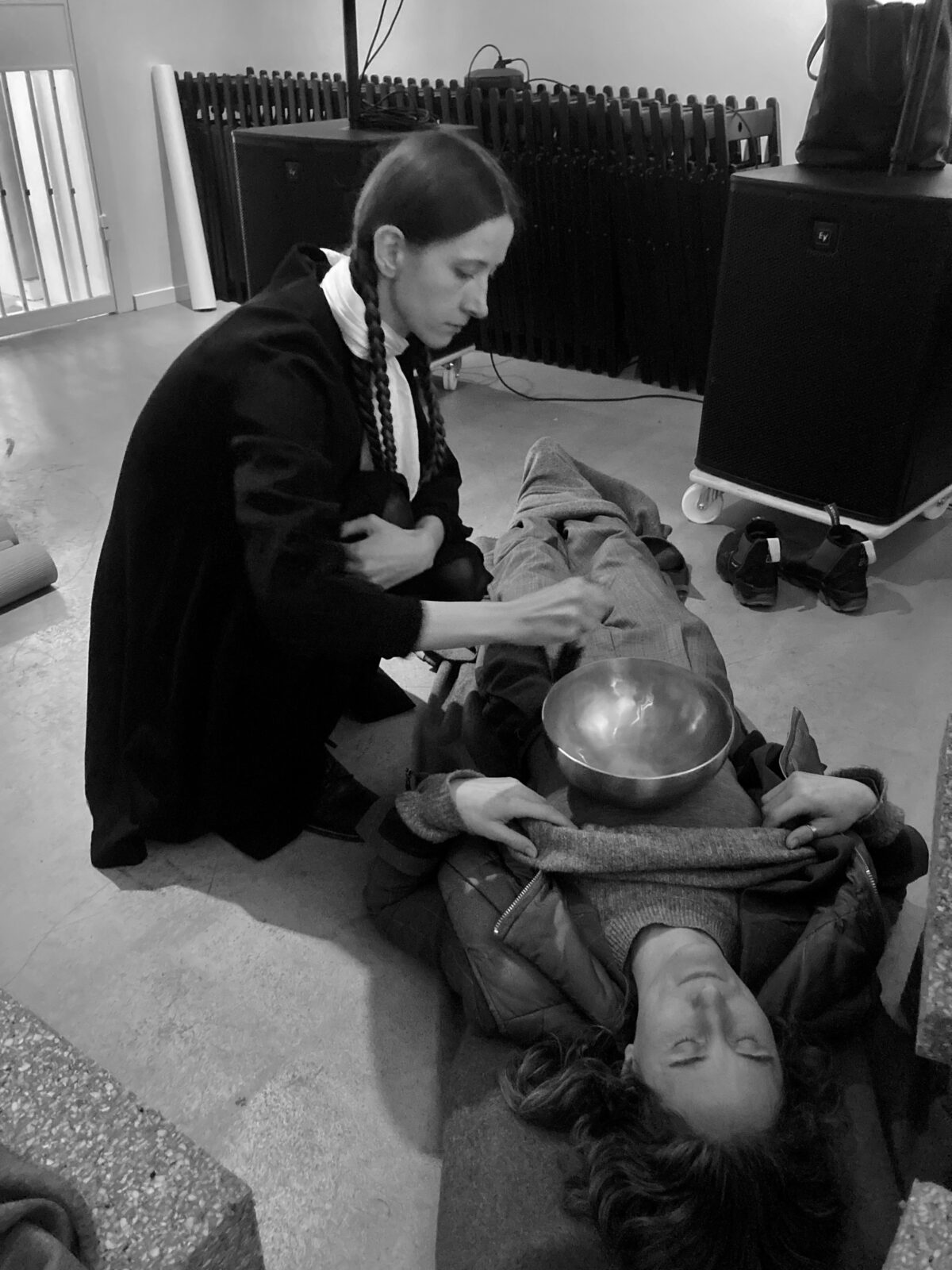
Workshop with resoundings and resonances of a Tibetan singing bowls into the human body, led by Barbora Kováčová.

Workshop with resoundings and resonances of a Tibetan singing bowls into the human body, led by Barbora Kováčová.

Workshop with resoundings and resonances of a Tibetan singing bowls into the human body, led by Barbora Kováčová.

From Listening Event III, 21/03/2024, Art Hub Copenhagen
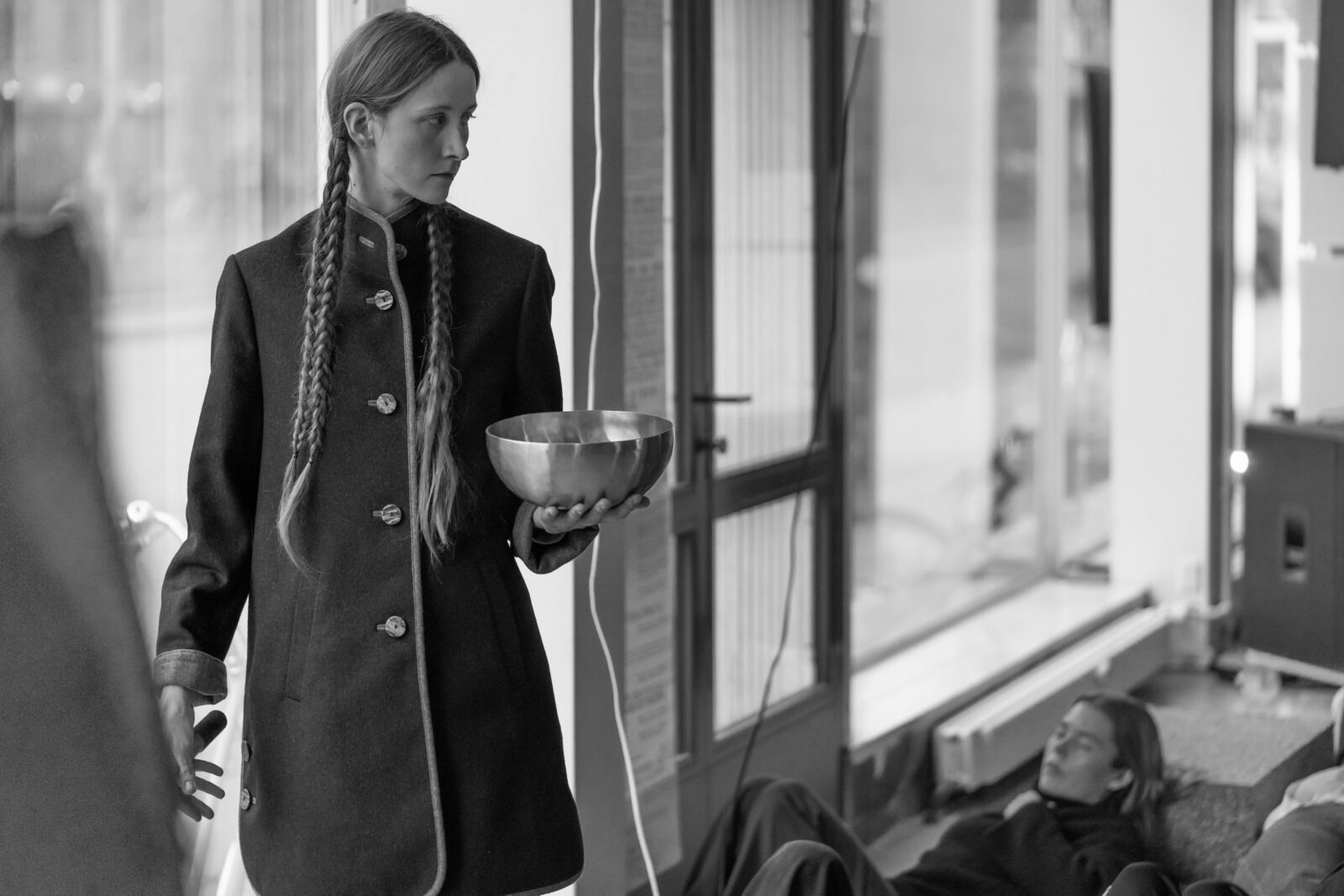
From Listening Event III, 21/03/2024, Art Hub Copenhagen

From Listening Event III, 21/03/2024, Art Hub Copenhagen
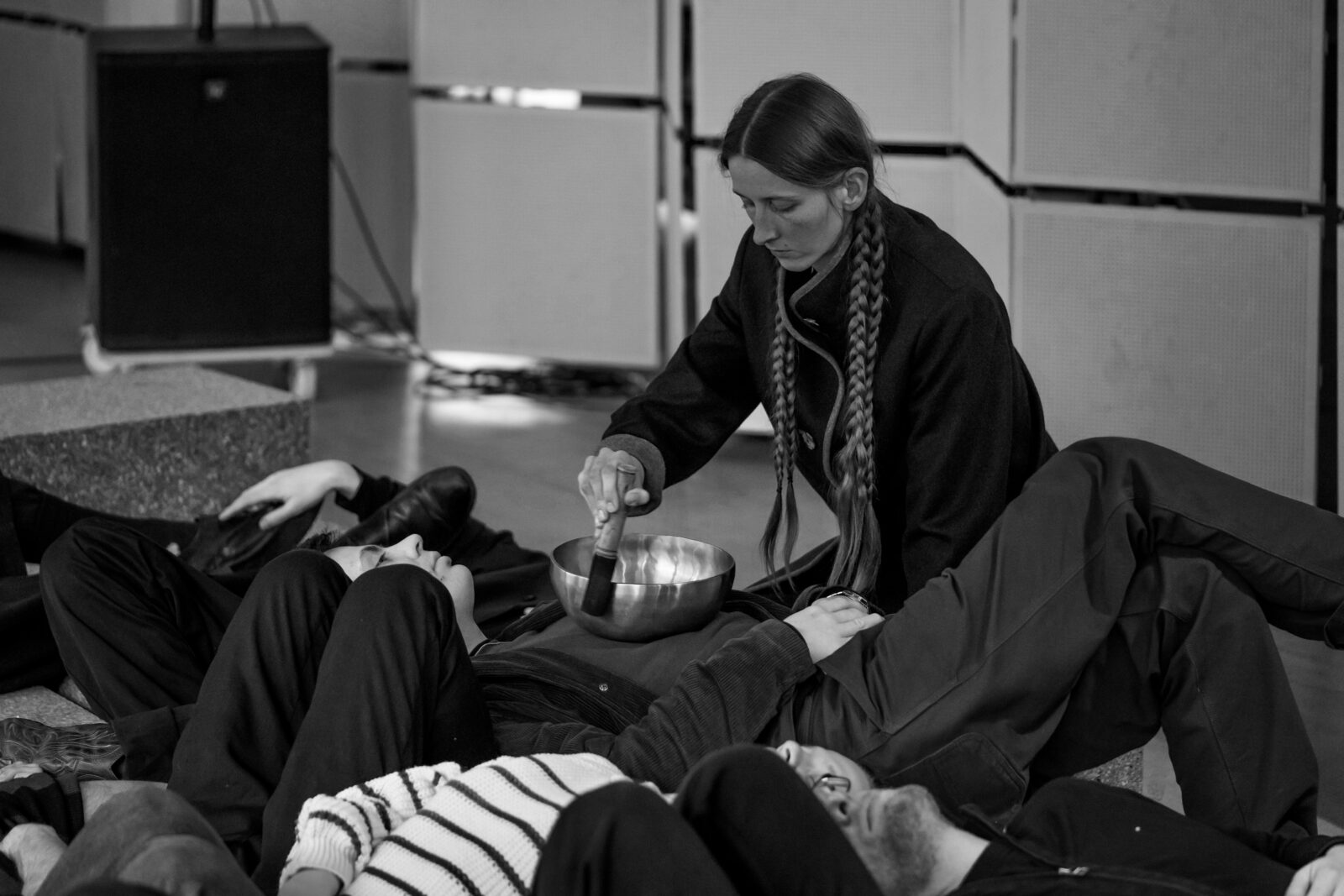
From Listening Event III, 21/03/2024, Art Hub Copenhagen
These different questions for the listening body were distributed among smaller conversation groups during Listening Event III:
What words might resonate with how you feel as a listening body?
What words would you use to describe a/or another listening body?
As a listening body, you have emotions, experiences, sensations, comforts or discomforts. Are there any that you would like to voice? And if they can’t be voiced, how may we recognize and stay-with that?
What hinders your body from listening? What enables your body to listen?
In what ways do you use your listening body in your daily life?
How has your body listened today? And how will your body listen tomorrow?
How would you guide others to be a listening body? What guides you to be a listening body?
Which factors significantly influence you as a listening body? How does your listening body change in relation to situation/place etc.
How is your capitalistic (listening) body feeling today?
Through out the third week of the Testing Ground, our process and activities were influenced by other voices – we would like to share some of their words/quotes in the following:
Hartmut Rosa, quotes on resonance
…a kind of relationship to the world, formed through affect and emotion, intrinsic interest, and perceived self-efficacy, in which subject and world are mutually affected and transformed.
Resonance is not an echo, but a responsive relationship, requiring that both sides speak with their own voice. This is only possible where strong evaluations are affected. Resonance implies an aspect of constitutive inaccessibility.
Resonant relationships require that both subject and world be sufficiently “closed” or self-consistent so as to each speak in their own voice, while also remaining open enough to be affected or reached by each other.
Resonance is not an emotional state, but a mode of relation that is neutral with respect to emotional content. This is why we can love sad stories.
Affordances
“…exploring the relation between the invitational potential of affordances and the action capabilities of the body.”
The Body (Lisa Blackman)
“…our bodies always extend and connect to other bodies, human and non-human, to practices, techniques, technologies and objects which produce different kinds of bodies and different ways, arguably, of enacting what it means to be human.
The idea of the body as simply something we both have and are is displaced in this perspective as the focus shifts to what bodies can do, what bodies could become, what practices enable and coordinate the doing of particular kinds of bodies, and what this makes possible in terms of our approach to questions about life, humanness, culture, power, technology and subjectivity.
These are some of the themes…. which radically refigure the idea of the body as substance or entity and even as distinctly human.”
Silvia Federici, Beyond the Periphery of the Skin, Pm Press, 2020, pp. 123-124
“Our struggles then must begin with the reappropriation of our body, the revaluation and rediscovery of its capacity for resistance, and expansion and celebration of its powers, individual and collective.”
Brandon Labelle, Acoustic Justice, Bloomsbury, 2021, pp. 125-126
“The skin is what confronts the world; it meets the world, to assist in navigating the material and social shape of things, and how these things are made available or not, put in reach of oneself or withdrawn. […] We may say that I am grounded in my skin, and it is through my skin that I find my ground.”
Kazuo Ohno (orally transmitted to NFS)
I’m just here, along with something else…
Donna J. Haraway: Staying with the Trouble – Making Kin in the Chthulucene
“Visiting is not an easy practice; it demands the ability to find others actively interesting, even, or especially others most people already claim to know all too completely, to ask questions that one’s interlocutors truly find interesting, to cultivate the wild virtue of curiosity, to attune one’s ability to sense and respond – and to do all this politely!”
***
“[This] sort of politeness does the energetic work of holding open the possibility that surprises are in store, that something interesting is about to happen, but only if one cultivates the virtue of letting those, one visits intra-actively shape what occurs. They are not who/what we expected to visit, and we are not who/what we anticipated either. Visiting is a subject- and object-making dance, and the choreographer is a trickster.”
“Interesting research is research conducted under conditions that make beings interesting.”
Other documentation photos from Listening Event III:
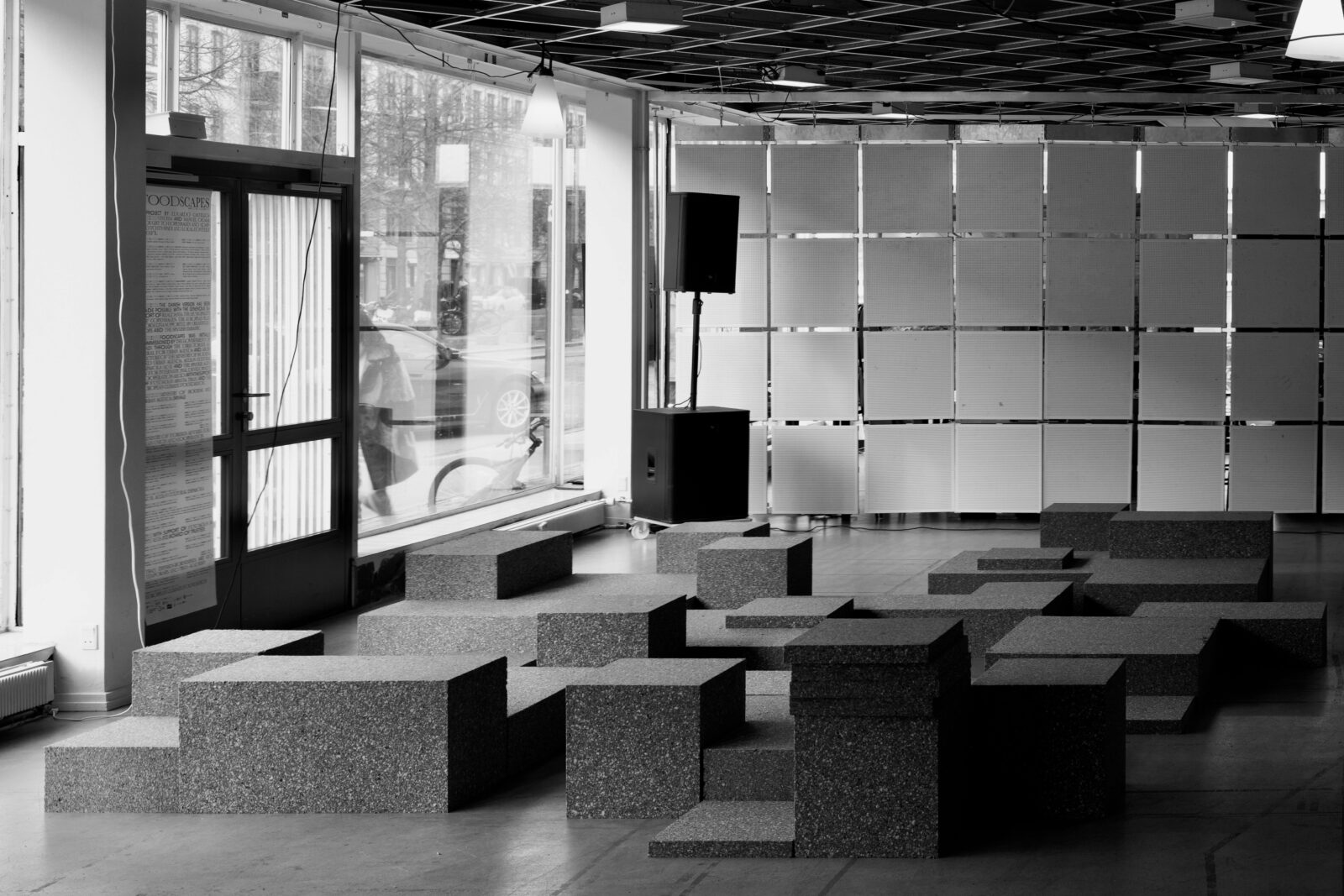
From Listening Event III, 21/03/2024, Art Hub Copenhagen

From Listening Event III, 21/03/2024, Art Hub Copenhagen
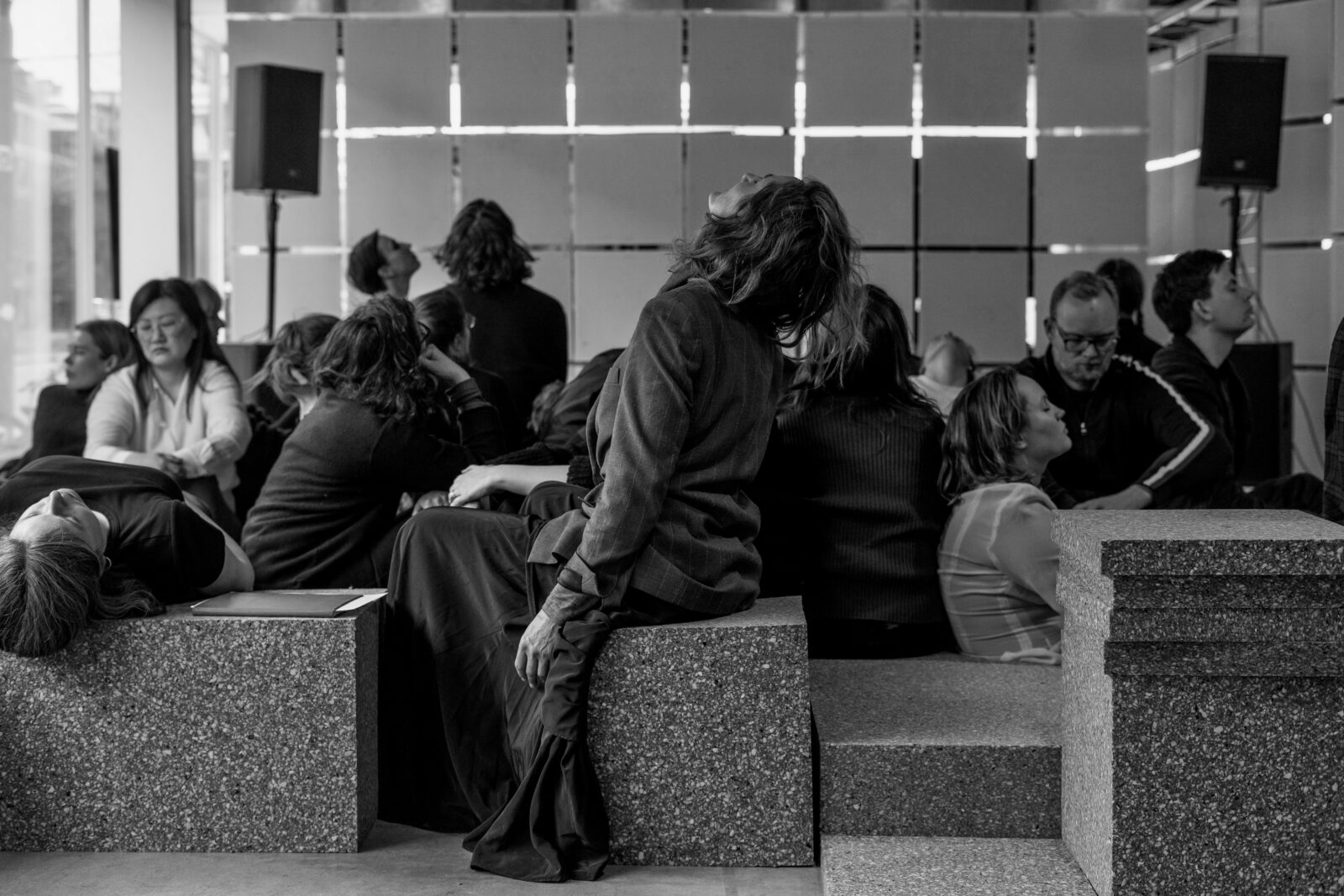
From Listening Event III, 21/03/2024, Art Hub Copenhagen

From Listening Event III, 21/03/2024, Art Hub Copenhagen
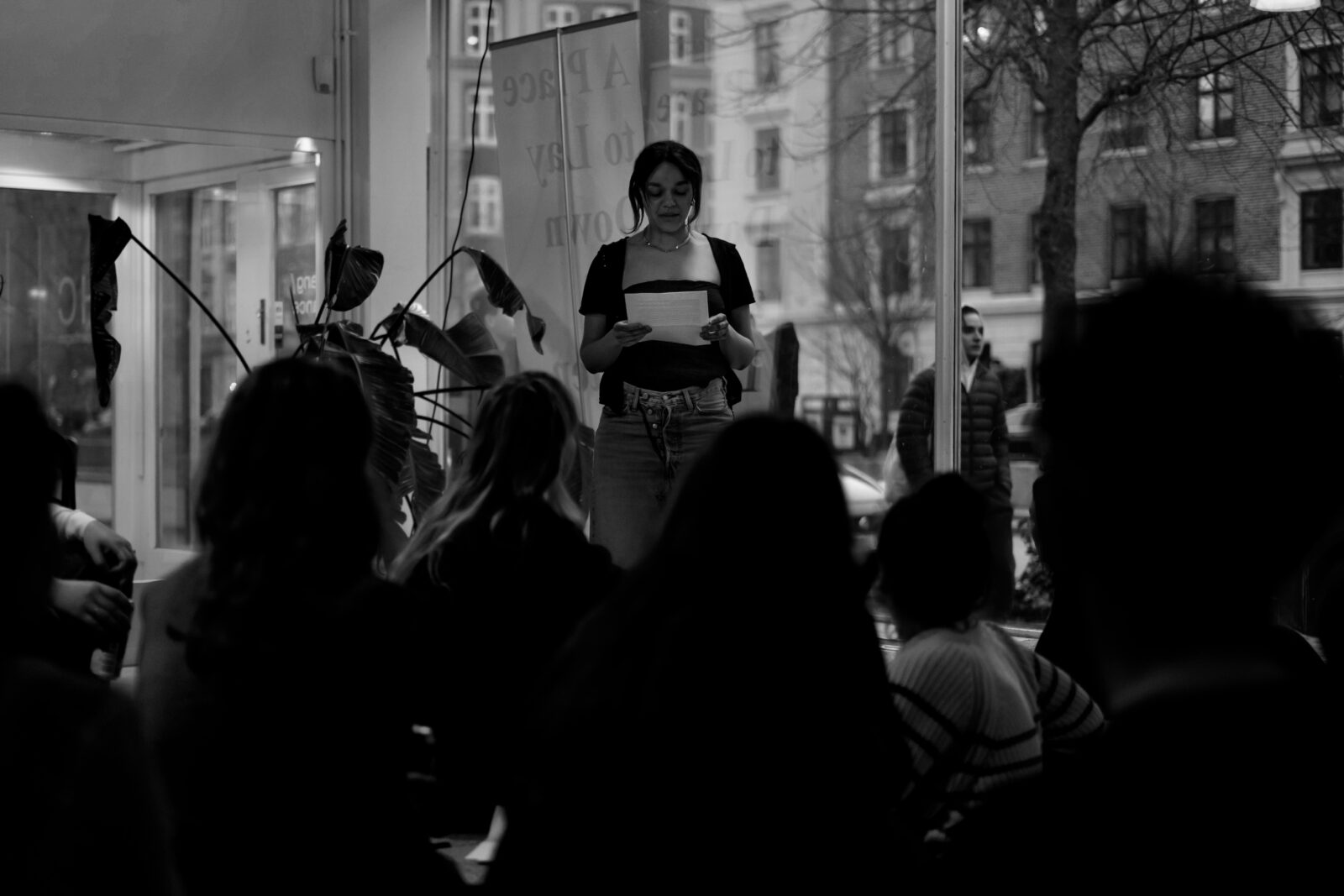
From Listening Event III, 21/03/2024, Art Hub Copenhagen

From Listening Event III, 21/03/2024, Art Hub Copenhagen
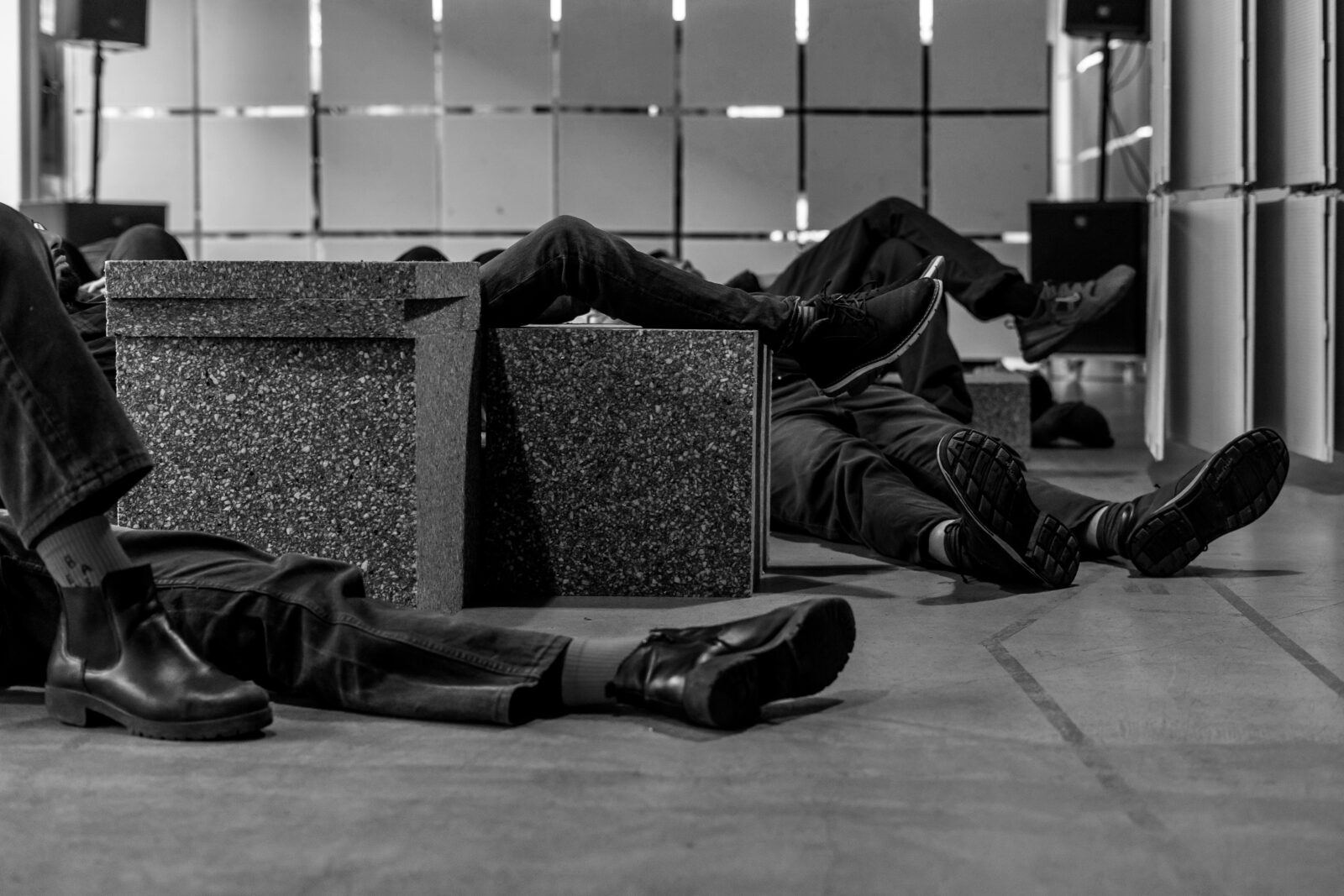
From Listening Event III, 21/03/2024, Art Hub Copenhagen
